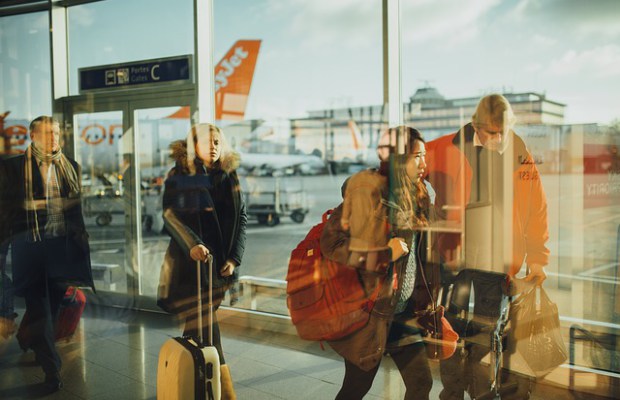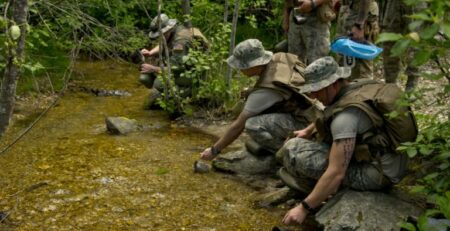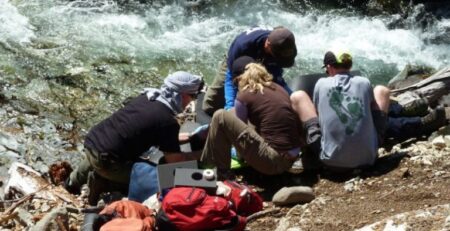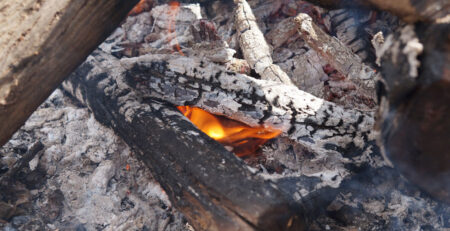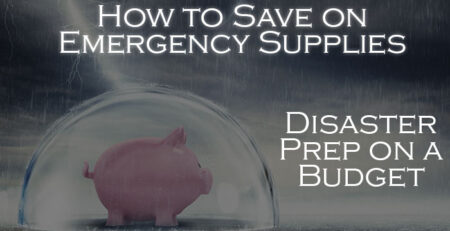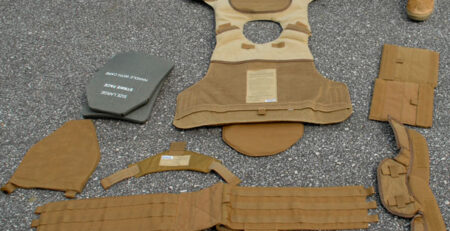How to Travel Like a Prepper
Prepping for a large majority of us involves analyzing the risks we see inherent with situations we could be faced with and taking steps to mitigate those risks. For a lot of risks, the answer is simple. To avoid starving due to a disruption with our food delivery system you can grow your own food, you can plan to increase your storage of long-term foods by canning or purchasing quantities of extra foods, freeze-dried foods or bulk food items like wheat, beans and rice. Other aspects we prepare for involve a similar process but usually the place where we are best prepared is home.
Sure we can plan for bugging out if needed. Our bug out bags extend our abilities to leave our castle in the face of impending doom and move to a safer location. We can outfit bug out vehicles with additional capacity to move overland and carry extra supplies but nothing really replaces a strong, stable location where we have systems in place to help us survive. As well has having all our stuff, we know the land, usually have some relationships with neighbors or friends to further build-out ourpotential survival group. Our home base has incredible advantages that we might not miss unless we are away when some disaster happens and you are forced to make it home with only what you have on you and what you are able to scrounge or scavenge along the way.
I think of this subject at least once per year because I travel on business. My family travels to see relatives or to vacation in some nice place if we are lucky. When either of those things happen and I am hundreds or thousands of miles away from home, I feel less prepared for anything than when I am sitting in my suburban (non)bunker with all of my support systems surrounding me. However, I have learned that just because your man-cave isn’t within arm’s reach and all your weapons and gear aren’t as easily available, you can and should still prepare. There are some lessons I have learned and rules that I try to follow as closely as I can when I travel that could keep me alive and help me make it back home if disaster struck and I was away from my family. Today I want to talk about how to travel like a prepper so that you aren’t left with nothing if faced with disaster.
I have discussed in the past how to pack like you are never coming home. That article captured some of my thoughts around what you should consider if you were traveling with family via car somewhere away from home. Today I will focus more on the scenario of a trip where you are going to be traveling alone perhaps on business and need to plan for getting back home and surviving should some emergency occur.
Do your homework before you travel
Naturally, where you are traveling to, what your reason for traveling is, who you will be with and the method of travel all factor into decisions you have to make before you start throwing the first pair of socks into your suitcase. If I am headed an hour or two away, I would not plan the same way I would for a trip overseas. If I was traveling in my car, I would have different items than if I was traveling by plane.
Here are a few things I think about:
- How far away from home will I be?
- Is the destination a major urban center or more rural?
- How will I get there?
- What restrictions if any are there on what I carry or how I dress?
- Can I make it home if needed on foot from this destination?
- What is the best/safest route?
- How long would it take?
The goal is to consider my travel destination within the context of what I am traveling for and take with me items that appropriately could mitigate my situation if some emergency happens. These emergencies can scale from minor travel disruptions to a complete grid-down mess.
What prepper tools can you bring with you on your travels?
Many of us leave the bug out bags and our go to war chest rigs at home when we travel and that makes sense. If you leave town for a business trip, you simply won’t be able, without an inordinate amount of headache, take many of your prepping supplies with you.
There are some staples that I bring with me whenever I go that are multi-use and offer me several advantages that the casual traveler won’t have. Before I get into those, make sure your situational awareness doesn’t take a break when you are out-of-town. Know where the exits are at all times, especially in a strange place. Do you know the route back to the airport? Where are the major freeways? Are you watching the news for current events? Keeping connected to what is going on around you is advantageous too.
EDC items packed in suitcase
Many people who fly these days pack all their luggage in a carry on. This has some advantages but many more drawbacks in my opinion. First, you can’t bring anything on the plane that could be construed as a weapon so that rules out knives and firearms obviously. Yes, I know people will say that you can never lose your luggage if it’s with you in the overhead compartment, but I would rather take my chances with that than to not have some defensive measures with me. Actually co-workers have looked at me strangely when they saw I was carrying a knife on a business trip because the idea is so foreign now. They even said, “How did you get that through security” because the idea of checking luggage is so foreign to them. Oddly enough another co-worker. when they saw I had a knife and a multi-tool said, “I know who I am hanging out with if anything bad happens”. They could see I was thinking ahead.

- Knife – I bring along my tactical folding knife whenever I travel because the utility and advantages of a knife in a survival situation are too great to ignore. Yes, I assume that there might be some way for me to purchase one at my destination should all hell break loose, but who wants to take that chance?
- Multi-Tool – Another force multiplier that goes with me. My Leatherman Wave has 17 tools that I could use if needed during an emergency. Some will say that since you have a knife on your multi-tool you could leave the other knife at home. Yes, you could, but I have a backup.
- Headlamp – I have extolled the benefits of a great headlamp many times in the past and you don’t even have to worry about sneaking this past security. Being able to see with the added benefit of hands free is a great advantage in a lot of situations. Need to get out of the hotel at night because of an earthquake? Wouldn’t you want to slap your headlamp on your head before you move out?
- Bandana – Cheap multiple use item. The ubiquitous bandanna can offer protection from contaminants in the air, can be used to shield you from sun, as a bandage, a sling and many other tasks limited only by your ingenuity. Carry more than one because they don’t weigh anything or take up space. You can have one in your carry-on luggage.
- Source of fire – Pack a couple of Bic lighters and some dryer lint or a few WetFire packages to get a blaze going when you need to.
- Firearm – If I am traveling any place that has a reciprocity agreement with my state on concealed carry, I am flying with a firearm. Flying with firearms is perfectly legal and relatively pain-free. I also carry a spare magazine, a holster and at least one box of ammo. If the worst does happen and I am forced to deal with a horrific situation, I want something more than harsh language as self defense.
- Bag/Backpack – I won’t pack anything large, but a small bag to carry items is another useful thing if you have to walk. Many travelers already have a backpack that they throw their laptops in. If you have one already you are good. I don’t have a backpack though so I carry the Camebak Arete 18 which does two things for me. First, it is a simple day-pack that can hold a modest amount of gear and supplies. I can throw all of my EDC items in this pack if I need to plus some shelter options and maybe some food and hit the road. Additionally, it has a water reservoir so I can carry water to drink at the same time. You can never have too much water capacity though so I also pack a 48 Ounce Nalgene Wide mouth canteen. This rolls up to about the size of a small deck of cards when I am not using it, but allows me to double my water capacity. I throw in a Sawyer Mini Water Filtertoo. For its size, it is phenomenal and gives me the ability to filter more water than I can probably drink in a couple of years safely.
- Watch – My Pathfinder watch is solar-powered and it has a compass so if I get lost, this could help point the way.
- Backup power – I also carry a battery backup system. The RAVPower 16750 Battery pack can charge my cell phone 6 times. If you are delayed somewhere or the power is out but cell service is still working, this can keep you talking with family. Also makes long overseas flights better when your devices don’t crap out on you mid-way across. Bonus feature, this has a light on it.
- Cash – Always fly with cash because your credit cards or ATM cards may not work where you end up. How much cash should you carry? That depends on what you are comfortable with. I generally tend to bring enough to get me out of minor jams, but not so much I could buy a car. A couple hundred dollars could go a long way.

How will you make it back home if the worst happens?
So the EDC items above give me some advantages. I can cut things, shoot at bad people if they try to harm me, light my way and know where I am going. These tools above can help you anywhere you are, but what if you are forced to try walking home? What can you bring with you to assist you on that journey should you be unfortunate enough to have to make it back to your family.
Consider your clothing
I love sitting in airports and observing the outfits that people fly in. I imagine something tragic like a crash landing on a remote mountainous region and visualize how these people in their flip-flops and short shorts will fare.
For starters I always fly in good laced up shoes just in case I have to make it out over sharp or hot surfaces but I also pack a walking outfit that fits the climate and terrain I will be traveling through if I have to make it back home. This isn’t anything fancy and I am not bringing changes of clothing but I do have some basics.
- Long pants – Preferably some that are a little more durable. Hiking pants that convert to shorts would work too and pack down small. Extra pockets give you the ability to carry more and make sure they have loops for a belt.
- Long Sleeve Shirt – Yes even in hotter climates I pack a (lightweight) long sleeve shirt. I can roll up the sleeves if needed, but cover up if sun is an issue. Longer sleeves also help with mosquitoes and other insects.
- Hat and Sunglasses – Seasonal. For warmer weather Hats offer a break from the sun and you always need to protect your eyes. In colder weather the hat would be a toboggan.
- Rain Gear – A jacket at minimum even if there is no rain forecast for where I am staying. A rain jacket also doubles as a wind breaker. Colder locations I would bring other layers and a fleece.
- Good walking shoes – These don’t have to be hiking boots but something that you can comfortably walk in all day. For many days potentially.
Know your route home
Sure you might be able to pick up a road atlas at a store before you leave, but know the route you would take back home just in case. One business trip I was on put me on the other side of the country. There were several routes home, but most passed directly through large cities. It may be necessary to avoid these in a really bad collapse.
Discuss plans with family
My family knows that if something happens when I am away that I will be coming back as long as I am alive. Cross country trips on foot could take months so they know it may take some time. If communication is open, then likely the emergency isn’t so wide-spread that civilization has failed.They know where the supplies are and what to do in order to stay safe. Make sure your family knows this too.
The items above only scratch the surface. There are so many other ways to stay safe when you travel that aren’t mentioned here but I find that the items above are the ones that most people leave at home. I could go on and on with other items that are useful, but I thought that this list covers most bases. What do you pack when you travel?
How to Travel Like a Prepper was written by Pat Henry with Prepper Journal and can be viewed here:
http://www.theprepperjournal.com/2016/06/02/travel-like-prepper/

